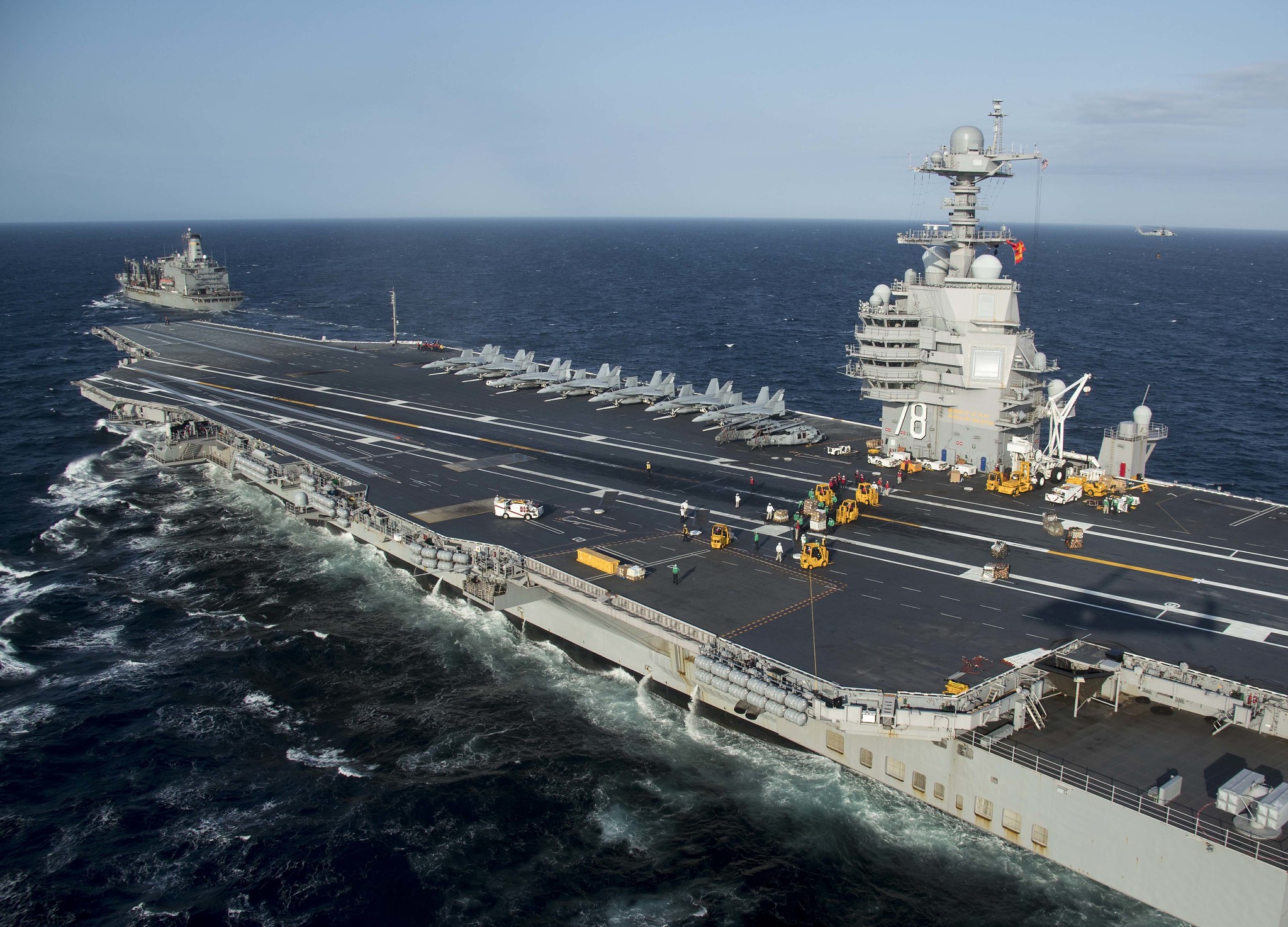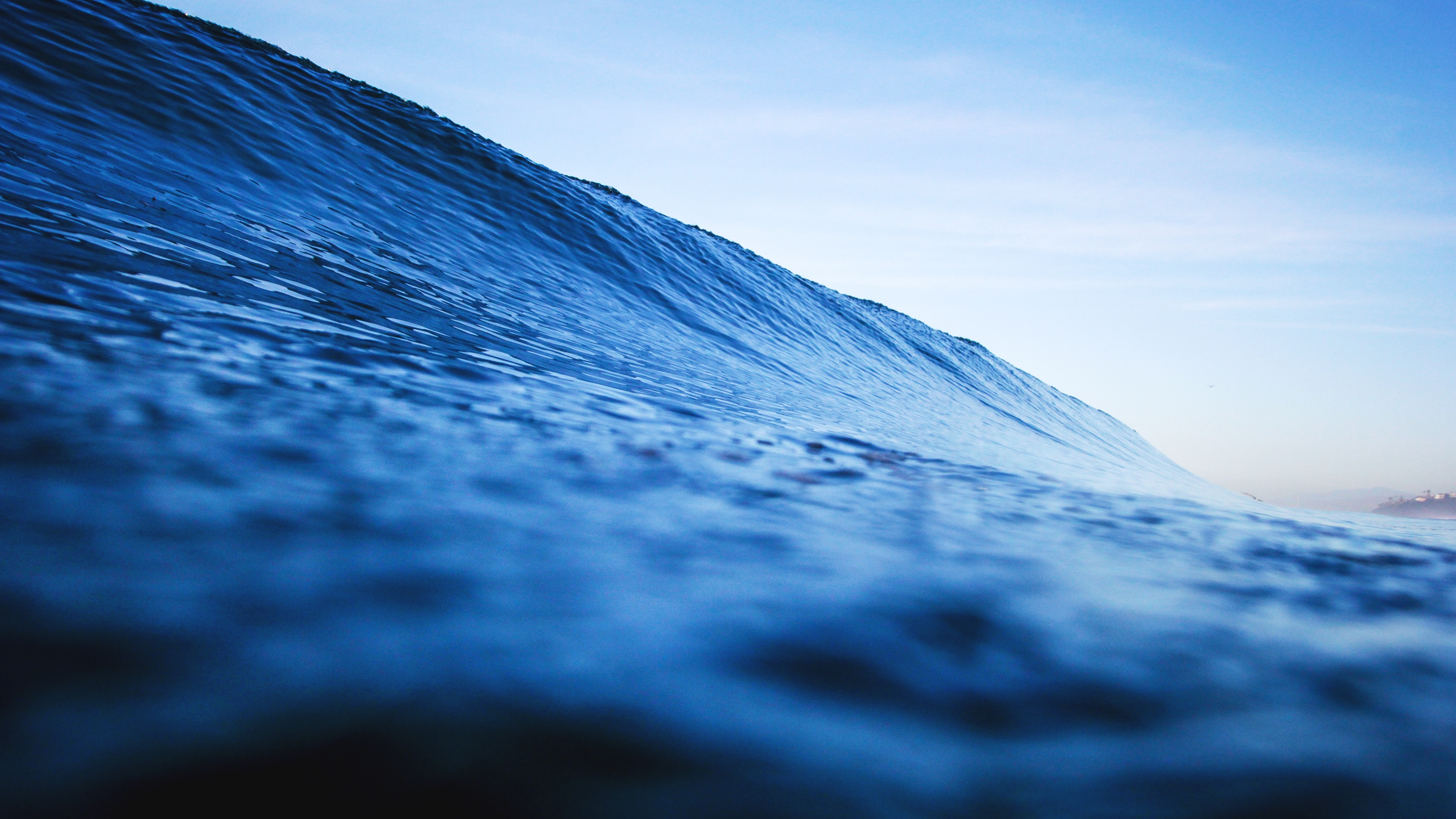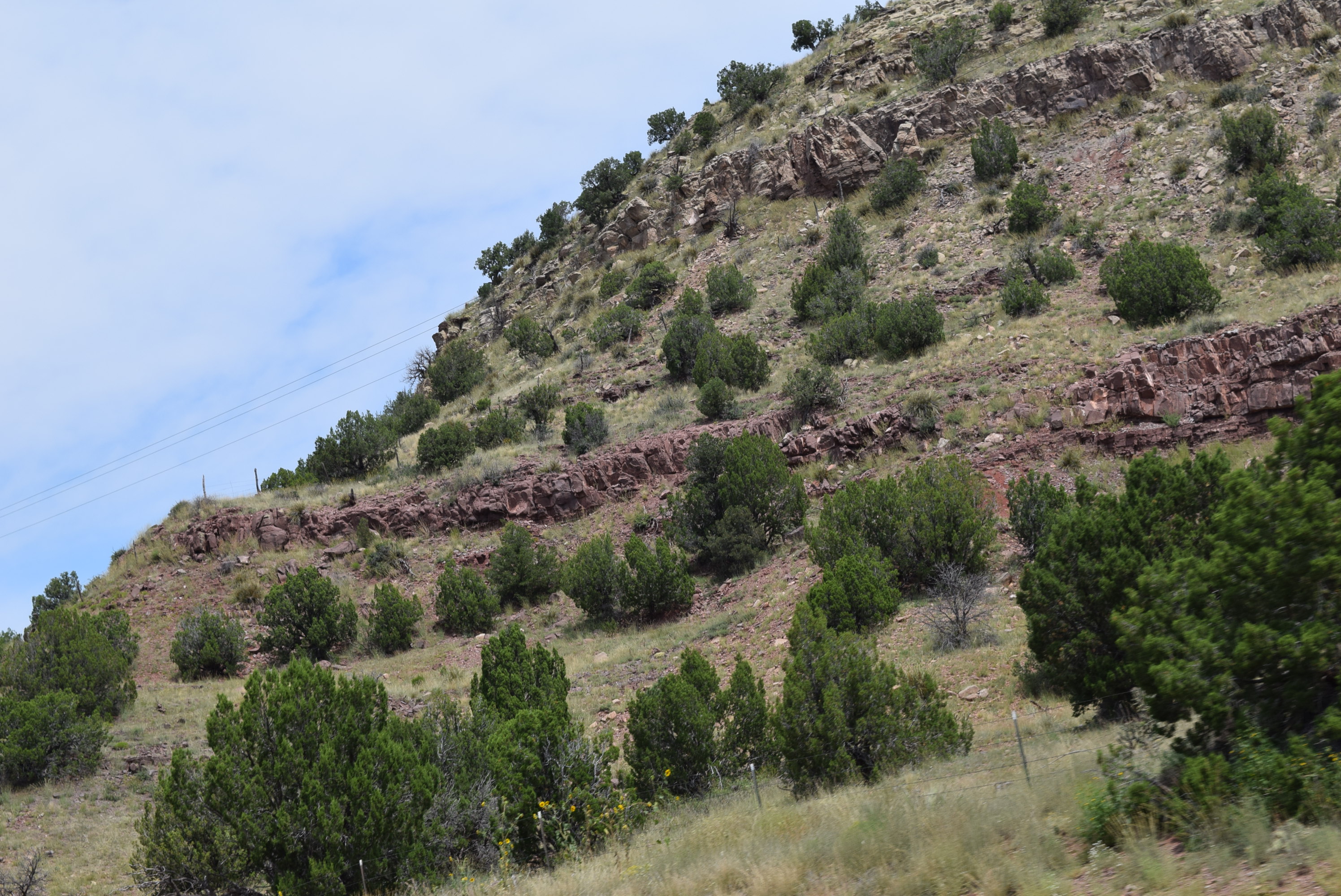Read Part 1 Here
Read Part 2 Here
Read Part 3 Here
Read Part 4 here
Read Part 5 Here
The Bigger They Are...

The USS Gerald R. Ford (CVN 78) was the biggest, most expensive, powerful, and technologically advanced warship ever built for the United States Navy. The great ship, along with its accompanying task force, comprised of six escort ships and one Fast Attack Submarine, was seventy-five miles off the coast of Virginia when the first day of the harvest began. The ships were each hardened against an Electromagnetic Pulse attack and thus were able to maintain nearly full combat readiness after the initial blasts from the sun. Loss of light from the sun was also not a massive problem as the ships were used to maneuvering in darkness and in storms at sea. They did lose a couple of aircraft and some electronic equipment, but overall they were confident that they were ready for anything. Intel reports coming into the control center were very confusing, but it was evident that the Country was under attack, but by who? Information was scarce because the transmissions they were receiving all came second hand from hardened military communication systems along the East Coast. One report spoke of large earthquakes happening around the globe, or were those earthquake signals coming in due to using some type of superweapon? When the first reports of giant ants came in, no one knew what to make of it. Then the task force was ordered to the Chesapeake Bay and the mouth of the Potomac River to provide support and air cover for the immediate evacuation of essential personnel.
These orders coming from SITCOM and the lack of information about the situation on the ground were confusing and concerning to Captain Sam Prichard. His first order then was to launch reconnaissance aircraft and for communications to be established with any military or civilian police force on the ground, and for them to collect all available intel. He needed to know immediately what he was dealing with, what aircraft should be launched, and what kind of weapons loadout would be best suited for the situation.
When the reports of giant ants started coming in it made no sense to him. Still, after a moment of consideration and a few more sightings of giant ants, he consulted with his officers then ordered every available aircraft armed with weapons suited for use against ground forces. In addition, all available Helicopters from the task force would be ready to begin evacuation efforts when they were within fifty miles of shore. These helicopters would be supported by the F-35C Lightning II's from Strike Fighter Squadron 97.

What Captain Pritchard had no way of knowing at the moment was that the North American Tectonic Plate and all of the other Tectonic plates around the world had begun to decouple and would begin to drift within hours. Large earthquakes had already shaken the mountains and valleys of the deep, and volcanic islands were in the process of collapsing into the sea. Already the first of several giant tsunami waves were heading toward the Task Force at more than six hundred miles per hour. Later even greater waves would form and slosh back and forth as the great Continents themselves moved, jostled, and reformed themselves into a world that would be unrecognizable by any human that survived the harvest.
The reconnaissance aircraft finally gave the task force the intel they so desperately needed, and it was not a pretty picture. An innumerable army of ants was attacking all along the coast, and there was simply chaos on the ground everywhere as people ran, hid, and fought for their lives. The skies were full of thousands of birds flying in what appeared to be every direction. They, as well as people and animals, were all looking for safety. When the ships were in sight of land, the birds began to cover the masts, rails, and decks. They were everywhere, and they hardly moved out of the way as the sailors walked and worked among them. Jet aircraft could no longer land or take off because of the birds, the crew tried forcing them away from the ships using firehoses, but the birds just circled around and landed again. Marine One carrying the President of the United States, was inbound, and they were coming on board despite the danger of birds being sucked into the engine air intakes. When the helicopter came to rest, Captain Pritchard was already on deck, ready to greet the President amid a storm of feathers. It was then that the collision alarm sounded!
Water was rapidly receding out of Chesapeake Bay, and the big ship was about to find itself grounded. Sam Pritchard could already see the wave building in the distance, and he was filled with a sense of dread. Motioning to the security detail, the Captain grabbed the President's arm and raced toward the closest watertight door. The wave hit even as the locking mechanism for the door was being engaged. The great ship groaned and rose rapidly, borne higher and higher and pushed inland by the wave. Then, after being carried a little over two miles inland, the bottom of the hull began to make contact with land objects that had now been inundated with water. The Carrier's stern struck something solid, creating a large hole below the waterline and swinging the ship around in a wide arch. The bow, which had been facing North was now pointing Southeast. Then the entire ship ran aground with a bone-jarring finality. It stood upright momentarily and then started to swing around from the force of the now receding water, and at the same time, she began to roll over on her Starboard side. Men, and anything that was not secured in place, crashed against the inside hull. The crew could hear the crashing of equipment and screeching and tearing sounds of grinding and buckling metal floor plates and bulkheads until the giant ship finally came to rest. Captain Pritchard was shaken up but otherwise uninjured. The President had a fractured arm, and two fingers on his left hand were dislocated. The Secret Service detail was already trying to move him to sickbay through hatches and passages now laid sideways. They were being helped and guided by a Chief Petty Officer and one of the Flight Officers.
The ship's two A1B nuclear reactors had automatically shut down during the shipwreck, but now they were without any electrical power and were lying on their side. If sitting upright, then there was the possibility of starting some natural circulating current to cool the hot fuel cells, but that was not an option since they were lying on their side. Ordinarily, the engineering officer would be flooding the containment room to supply some cooling and attempt to prevent a meltdown, or at least to immediately cool any fuel that might escape the reactor vessel. But the engineer was dead. His head had been cracked open after striking a large steam valve. The ship was aground, so they could not simply flood the reactor space with seawater. The crew members that were still ambulatory began working on the problem. It was either find a way to cool those reactors or run, and where were they going to go?
The engineering department worked to get the reactors cooled while the Captain and the rest of the crew that was not seriously injured started taking account and checking for damage, especially to the hull. They found the large hole in the aft port quarter and got the compartment sealed off just in time, as they could already see some of the ant scouts beginning to search through the flood zone where the seawater had receded.
It had only been a little over an hour, and they had just completed setting up a patchwork of firehoses and a battery-powered pump to start filling the reactor compartment when the next wave hit. The big ship groaned again and bashed a path through the debris another half mile inland, spinning around ninety degrees while doing so. She was now resting in a wooded area between Cherry Field Airport and Drayden, Maryland.

The primary relief valves on the reactors were opening every five to ten minutes with a loud roar relieving to superheated primary cooling water into the reactor compartment, minor fuel cell damage had occurred in both reactors, so the water was definitely radioactive, but it didn't really make much difference at this point. The remaining men who had not been injured during the second wave completed the makeshift reactor compartment fill procedure. Still, it would take all of the onboard water, including the drinking water, to have any hope of filling the compartments.
As the second wave receded, the ants returned again, and the men could hear them crawling over the hull outside. The men did not know that the ants were also listening to them, at least, the vibrations they created in the hull.
Whenever the ants found life in a sealed container, like the USS Gerald R. Ford, and they could not gain entrance no matter what they tried, then they would simply bury the object under a mountain of dirt. There were military tanks, concrete enclosures, underground bunkers, and many other sealed rooms that the ants could not dig through or find an entrance into that had been buried all over the world. If the ants could feel the vibrations of machinery, people talking, or any other indications of life, they simply covered it completely. They did this even if they had just completed digging the object up, trying to discover a way in. So while the crew worked on the inside of the ship, the ants began working outside. Thousands of ants worked tirelessly, encasing the marvel of modern naval warfare in a mountain of rocks and loose dirt.
The efforts to prevent a reactor meltdown had worked, but now the men had little water to drink, and their supply of fresh air had been completely cut off by the ants. So when the crew tried to get out and discovered that the ship was underground, a furious attempt was made to dig their way to the surface. But even if they had succeeded before the air ran out, ant scouts were up there just waiting for any signs of life.
It would be thousands of years before future archeologists would discover the ship again. It would then become a National Treasure for a distant generation, similar to when Tutankhamun's tomb was found by our civilization. Nevertheless, the big ship would yield a wealth of information about a great disaster that had come upon the earth long ago. Some of these future scientists even believed that this kind of disaster was cyclical and might happen again one day, but no one took the research seriously. Stories that had been passed down of a great worldwide disaster were considered just a myth, and discoveries like that of the demise of this ancient war machine were blown off as just being some localized event.
Hey! It's good to see you, again!
It's been so long I forgot how much I enjoyed your writing. Just caught up and this one is fantastic. I'm looking forward to part 7.
Yes it has been a while, but I set out with a goal for Scorum and I feel like I completed that goal to a degree that I never would have imagined. Now I'm ready to complete what I started over here and catch up with my friends again. I believe that the final fruition of all the effort that we have put into these crypto based communities is at hand and that mass adoption is even now already beginning. Thanks for remembering me and welcoming me back, it is good to see my friends still active and moving forward here on Hive.
I'm happy to hear that things went well with Scorum. And I couldn't agree more. It feels really good to have all of this work begin to pay off.
When did you start back?
Missed you old Friend!
Hi Snook! I've been posting for about a week now, I'm getting myself acclimated again with Hive now that they have partnered with Scorum. I'm hoping that it will make it easier and even fun to go between the two platforms once they have all of the cross chain links completed, at least I hope that they are working on that. You know that I have a one tracked mind and it is very difficult for me to do two things at once and keep track of it all. I hope that you and your family are well, you will have to catch me up on everything that has been going on.
OMG!! What a GREAT story!!! I could not stop reading it. Now I am all caught up and ready for part 7.
LOVE the line you drew with your fiction!